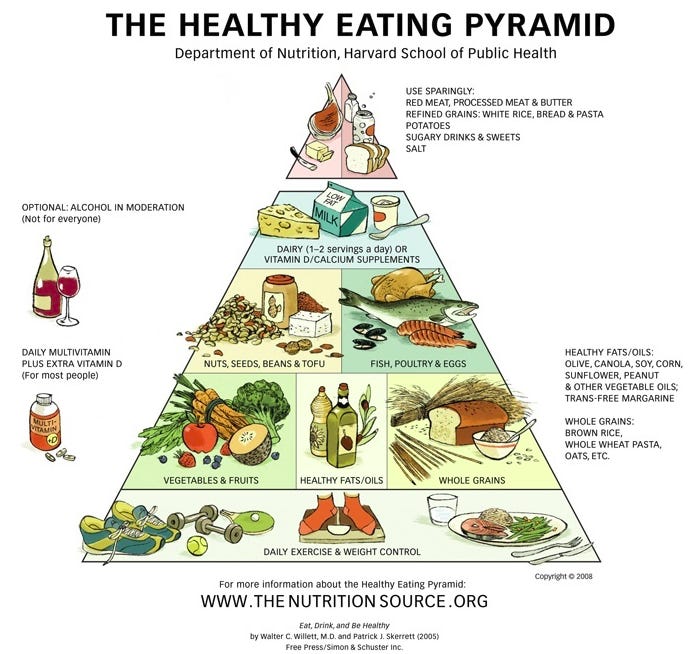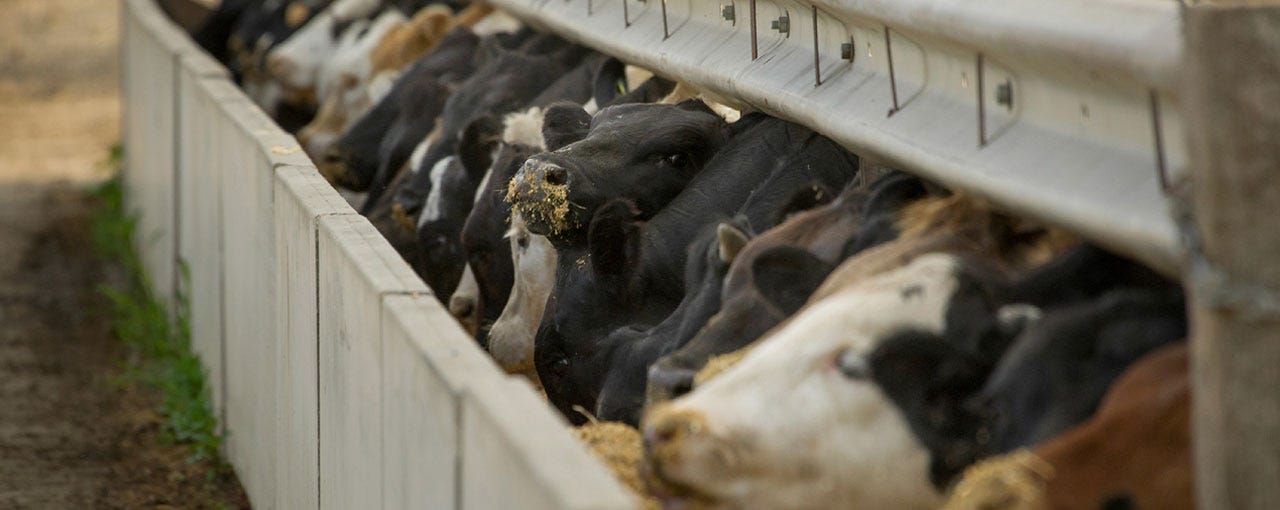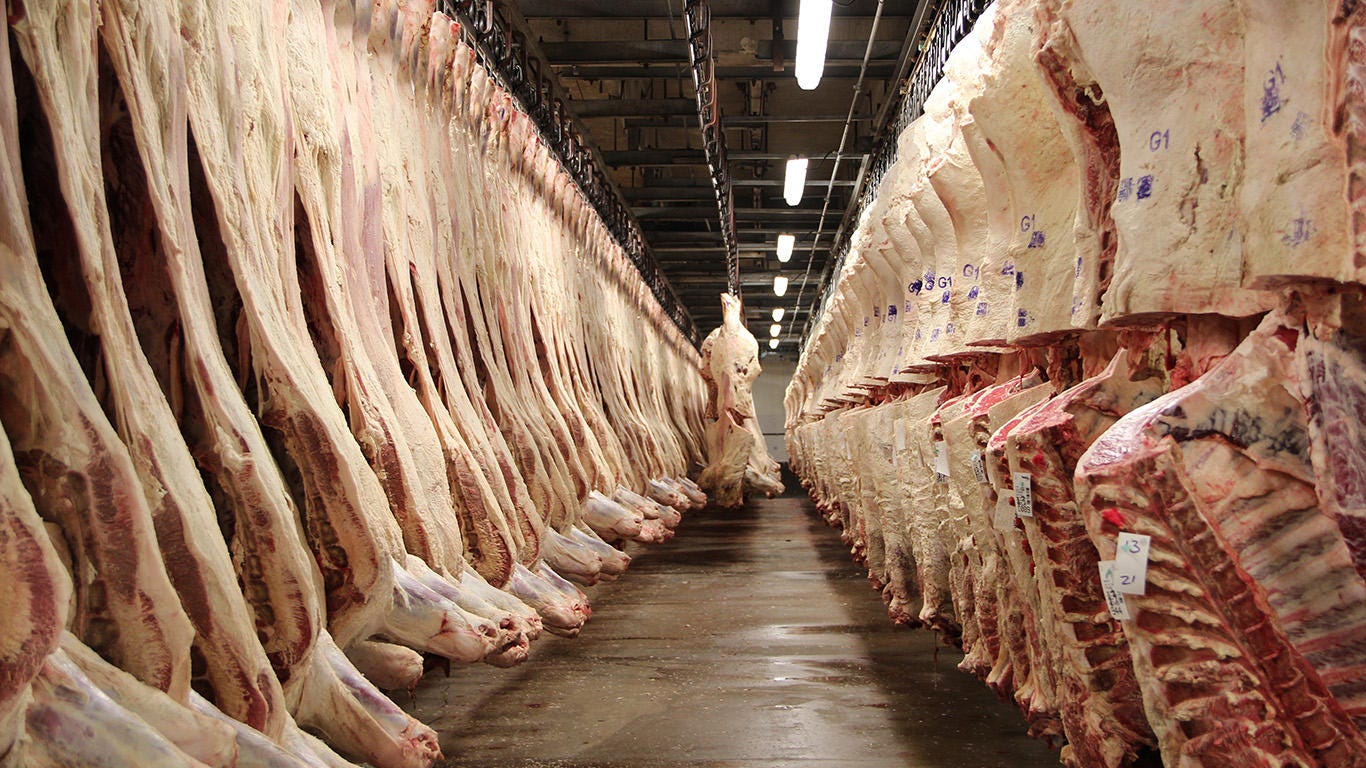We are living through a time of crisis.
Our Agriculture and Healthcare systems are broken.
The soil has been stripped of nutrients. The food is contaminated. Decades of corporate-sponsored misinformation has led to mass consumption of industrially refined grains and plant oils.
Unsurprisingly, the People are sick.
In the Part I of this two-part series, we explore the#RootCauses of this societal malaise. We examine how interventionism, centralization and top-down planning has corrupted our critical life-support systems and contributed to the present state of human and biosphere sickness.
In Part II, we provide a blueprint for saving our food supply and re-claiming our health through decentralization, localism, and regenerative farming.
Let’s begin.
Top-down Food Advice
Prior to the 1900s, there was little external influence on the dietary habits of Americans. People ate natural animal fats in the form of pork lard, beef tallow and butter. Metabolic health was good. Ischemic heart disease, obesity and Type II diabetes were practically non-existent.
The Seventh Day Adventists, under the leadership of Ellen G. White, had begun to advocate plant-based eating for religious reasons from the late 1890s1. Around the same time, refined plant oils including cottonseed and corn oil entered the American diet, heavily marketed by the growing Food Industry as profitable replacements for animal fat.
By the 1940s the incidence of ischemic heart disease was rising in lockstep with mass consumption of refined soybean, corn and cottonseed oil. In 1961 the American Heart Association, taking funding from plant oil manufacturers including Proctor & Gamble, and following Ancel Keys’ cholesterol hypothesis, recommended replacing natural saturated animal fat with polyunsaturated plant oils to reduce the risk of heart disease.
The 1977 McGovern Report and the 1980 Dietary Guidelines for Americans marked the beginning of government interventionism in nutrition. This notably occurred in the aftermath of the Nixon Shock of 1971 (see below). Americans were formally recommended to consume industrially-raised grains and refined plant oils while avoiding saturated animal fat and full-fat dairy.
Never before had such a novel dietary experiment been conducted on such a large scale. Never before had animal fat, an ancestrally-appropriate and essential macro-nutrient, been completely removed from the human diet. Never before had processed grains been consumed in such large amounts. What followed is a classic lesson in unintended consequences, iatrogenic harm and regulatory capture — an obesity and chronic disease epidemic that continues unabated to this day.
The American Dietary Guidelines epitomize the problem of interventionism and central planning. They have simply come to recommend foods that reflect the collective financial and ideological interests of agricultural producers, the processed Food industry, the Pharmaceutical industry and the Seventh Day Adventist Church. I have labelled the conglomeration of these corporate entities the Medical-Pharmaceutical-Agricultural Complex (MPAC).
Today, top-down planning of the human diet is reaching an absurd extreme. The shadowy propaganda of the World Economic Forum, a group of un-elected bureaucrats, are attempting to centralize all society under a ‘Great Reset’ plan. A key facet of its broad-scale dietary interventionism involves convincing people to abstain from all animal foods ‘for the planet’ while forcing them to eat a diet of soy-based imitation meat, insect protein and grains.
Centralized Food Production
Today, the US operates a massive industrialized food production operation based on stall-fed, feedlot animal agriculture and mono-cropped, high-input industrial plant cropping.
This system was born in the aftermath of the 1971 Nixon Shock. Secretary of Agriculture Earl ‘Rusty’ Butz was tasked with bringing the cost of food down in the face of skyrocketing consumer price inflation. He achieved this by implementing corn subsidies, which forced the family farm to sell up into growing corporatized farming operations. Vast swathes of land of were tilled and cultivated to grow corn, soy, wheat and oilseeds2.
The majority of corn, soybeans, canola planted in the US today are genetically modified3, bio-engineered to be sprayed with industrial herbicides as part of their growing cycle. Farmers are forced to buy both the GMO seeds and herbicides from Agri-business Corporations such as Syngenta, Monsanto (now Bayer) and Corteva (formerly DuPont). Farmers continue to face thinner and thinner profit margins in a market highly distorted by corporate profiteering and government subsidies.
Cattle ranchers have suffered a similar fate as crop farmers, with small and medium-sized ranches forced to sell up to larger-scale operations on account of deteriorating financial viability and monopoly power of the corporate industrial meatpackers. Today, cattle are sent to feedlots and fed on the cheapest forms of energy (industrially-grown grains) to put on mass in the shortest amount of time possible. The meat becomes contaminated by glyphosate and other toxic industrial chemicals present on the grains.
This top-down approach to cropping and animal agriculture has been nothing short of devastating for the land, the ecosystems and human health. It has contributed to loss of topsoil and necessitated ever larger use of herbicides (including glyphosate, atrazine), pesticides, fertilizers and antibiotics which enter the food chain and contribute to human diseases, including metabolic syndrome and endocrine disruption.
Tech mogul turned vaccine philanthropist turned Malthusian population-control proponent Bill Gates is now the largest private owner of farmland in the US. He controls 269,000 acres across 19 states, including water rights4. Gates epitomizes the role of nutritional and agricultural central planner. He has openly stated that he believes ‘all rich countries should move to 100% synthetic beef’ and has a direct financial interest in GMO monocropping through ownership of synthetic meat companies including Impossible Foods and Beyond Meat.
Centralized Food Processing
With the shift toward centralized industrial food production, so has there been a shift toward centralized food processing.
The culprit of the obesity and metabolic disease epidemic are ancestrally-inconsistent ultra processed plant foods. Unsurprisingly, refined genetically modified seed oils (canola, corn, soy, etc), refined flour, high fructose corn syrup and breakfast cereals are manufactured by multinational conglomerates that benefit enormously from centralization, industrial economies of scale and government subsidies.
Such is the scale of operation of Cargill, ContiGroup, Louis Dreyfus Company, Kellogg’s and Nestlé, many of these companies have multi-billion dollar financial arms that speculate and hedge agricultural commodities.
Meat processing is similarly centralized with the ‘Big 4’ meat packers JBS, Tyson Foods, National Beef and Cargill purchasing and processing over 85% of beef in the US5, as well as the overwhelming majority of pork and chicken.
The recent cyber-attack on meatpacker JBS temporarily took down 23% of US meat processing capacity6 and illustrated the fragility of a highly-centralized meat production system that essentially has only 4 major nodes.
Centralized, Top-down Medical Advice
Standardization of medical practice through consistent clinical guidelines is undoubtedly a positive outcome of centralization and top-down planning. But when this process becomes corrupted, guidelines come to reflect the financial interests of the largest stakeholder.
In the case of mainstream medicine, that stakeholder is the Pharmaceutical Industry. Today, the US runs the largest sick-care system predicated on pharmaceutical interventionism.
Polypharmacy is the norm, not the exception — in the US in 2016 18.0% of children aged 0–11 years, 27.0% of adolescents aged 12–19, 46.7% of adults aged 20–59, and 85.0% of adults aged 60 and over used prescription drugs in the past 30 days7.
Why are all these medications necessary? As we have discussed previously, the Corruption of the Human Diet is a major reason.
The physicians of this sick care system have been turned into credentialed prescription bots, merely managing the symptoms of chronic diseases with pills instead of healing their patients. Just like the farmer has been forced to buy GMO grains and industrial inputs from Agri-business to stay profitable, so have doctors been forced into prescription-pad medicine by the prevailing financial incentive system. Most are unaware of the forces that shape their actions. They are fish who have never asked the question, ‘What is Water?’.
The response to COVID-19 illustrates the limitations of a system reliant on top-down, centralized bureaucratic decision making that is vulnerable to influence by industry. Rather than address the underlying susceptibility factors that render people vulnerable to a severe COVID infection, the Pharma-captured Centers for Disease Control has pushed vaccines and expensive proprietary antiviral therapies while effectively banning efficacious early treatment with re-purposed, generic medications.
The Problems with Central Planning
Specific reasons why central planning is harmful or detrimental in the context of the food and agricultural systems and the human body include:
Scale. The more levels of abstraction between the central planner and the ground-level implementation of the plan, the less ability to respond to information. There is a lack of a rapid informational feedback loop. For this reason, decisions are rarely in the best interests of the lower-scale participants of the system.
Unintended Consequences. The human body, the biosphere and the economy are complex systems. Interventionism in a complex system leads to consequences that cannot be anticipated by the central planner. Each decision has 2nd, 3rd, 4th, Nth order effects that can precipitate radically different outcomes than intended. The epistemic arrogance of central planners is epitomized by a reductionist world view that assumes a direct, predictable and proportional outcome from an intervention and does not account for unintended consequences.
Fragility. Any overly-optimized, centralized system becomes fragile because redundancy is penalized and eliminated in the name of efficiency. Such fragility becomes revealed as more inputs are required to maintain homeostasis of the system. Greater amounts of pesticides, more blood pressure medications, higher doses of insulin are needed to prevent the system from breaking.
The factors that caused the present state of disaster cannot be relied upon to offer any sort of solution. It is self-evident that problems caused by centralization cannot be solved by more centralization. Despite the propaganda of supra-national bodies such as the World Economic Forum or beneficiaries of the incumbent system like Bill Gates and Agro-Industrial/MPAC industry groups.
We cannot cure the diabetic by injecting him with ever larger doses of insulin.
We cannot restore the soil carbon with ever larger doses of Superphosphate.
More centralization is not the solution.
Hallmarks of the Health, Agriculture and Nutrition Crisis
And if we look even deeper, we observe that the common theme between the broken Health, Agriculture and Food systems is a loss of long term thinking. Every decision optimizes for short term profit at the expense of the long term. Sustainability and Seventh Generation thinking has well and truly been lost.
At its core, it is a problem of distortion of time preference, which is itself due to a distortion of monetary incetntives. This was triggered by an un-tethering from economic reality in 1971 with the removal of currency from hard backing of the Gold Standard and the creation of a free-floating Fiat Money. From this critical moment onward, the incentive system became misaligned and favored centralization at the expense of decentralized, redundant systems that incentivize long-term thinking.
As in so many other areas of society, this key shift in economic incentives allowed bureaucrats, governments and corporations to influence demand, restrict free choice and censor the natural feedback mechanism of the free market.
The Decentralized Path Forward
Only once we understand that our critical life-support systems have been mis-optimized towards centralization in service of distorted incentives can we start to build a solution that optimizes for long-term, sustainable outcomes in the interest of the individual.
The goal is clear. Rather than short term profit, symptom management or highest crop yield, we should strive towards maximal individual healthspan, restoration of the soil and a redundant, sustainable, antifragile food system productive of nutrient-dense food.
The solution to the problems caused by centralization and top-down planning is decentralization, elimination of interventionism and organic, bottom-up growth.
In short, we need a Decentralized Revolution.
The Rest Is Up To You…
—RootCauseMD
October 5, 2021
P.S. Stay tuned for Part II where we sketch out the blueprint for a Decentralized Revolution that addresses the crises of Agriculture, Health and Food at their #RootCauses.
Thank you for reading The Malignant Centralization of Agriculture, Healthcare and Nutrition.
follow @RootCauseDoctor on Twitter
contact me at rootcausemd (at) protonmail (dot) com
support my work with a bitcoin (BTC) donation: PayNym +divinerecipe394 or email above for a deposit address
Credit: Untapped Growth, LaserHodl, Joe Norman, Saifedean Ammous, Jay Bart Simmons, Michael Kreiger and Texas Slim for providing inspiration for this piece.
Recommended Reading
Fiat Food, a Chapter from The Fiat Standard — Saifedean Ammous
Harvest of Deception and the mTM Initiative — Texas Slim
https://www.isupportgary.com/articles/lmed-an-energy-balance-prescription-to-move-more-eat-less-meat
https://en.wikipedia.org/wiki/King_Corn_(film)
https://www.fda.gov/food/agricultural-biotechnology/gmo-crops-animal-food-and-beyond
https://agfundernews.com/bill-gates-tells-reddit-why-hes-acquired-so-much-farmland.html
https://prospect.org/power/big-four-meatpackers-crushing-small-ranchers/
https://en.wikipedia.org/wiki/JBS_S.A._cyberattack
https://www.cdc.gov/nchs/products/databriefs/db334.htm








Listened to Paul Saladino's latest podcast with Alex Epstein, in which Alex proposed a hypothesis to explain the "climate crisis" and many other manufactured crises - an Anti-Human Agenda.
Must say it is a very compelling hypothesis that can be applied to all manners of movements: abortion, BLM (which conveniently increases murder rate in inner cities), transgenderism, war in areas populated with lots of poor people, three-letter agency promotion of addictive substances (food and otherwise) and our sick-care industry.
BTW, I was managing an UC in early 2000's, up to that point flu shots were not mandatory. But what most people did not know, you had to place your order for flu shots a year in advance. So you better get your number close to accurate because what you ordered is what you bought. If you didn't sell (because that is what we were doing) all the vaccines purchased, you obviously lost money. Up to the first SARS, vaccination rates were plummeting as anyone who worked in primary care knew, people who were vaccinated often returned in 2 weeks, sick. So the industry was losing money as they were producing product that wasn't selling (that's also when booster flu shots came to be).
Then SARS 1 struck (conveniently) and the it was a massive push to vaccinate (remember the push for nasal flu vaccines for infants?) and mandatory flu shots for healthcare employees came into practice.
I left.
Just as in Weston Price's time, doctors would send TB patients back to their rural communities for their health, we need to go back to our roots and leave the metropolitan areas alone. That's where the solution lies, in small towns and cities. Where a few peoples' improved health will be noticed and emulated because of the low population density.